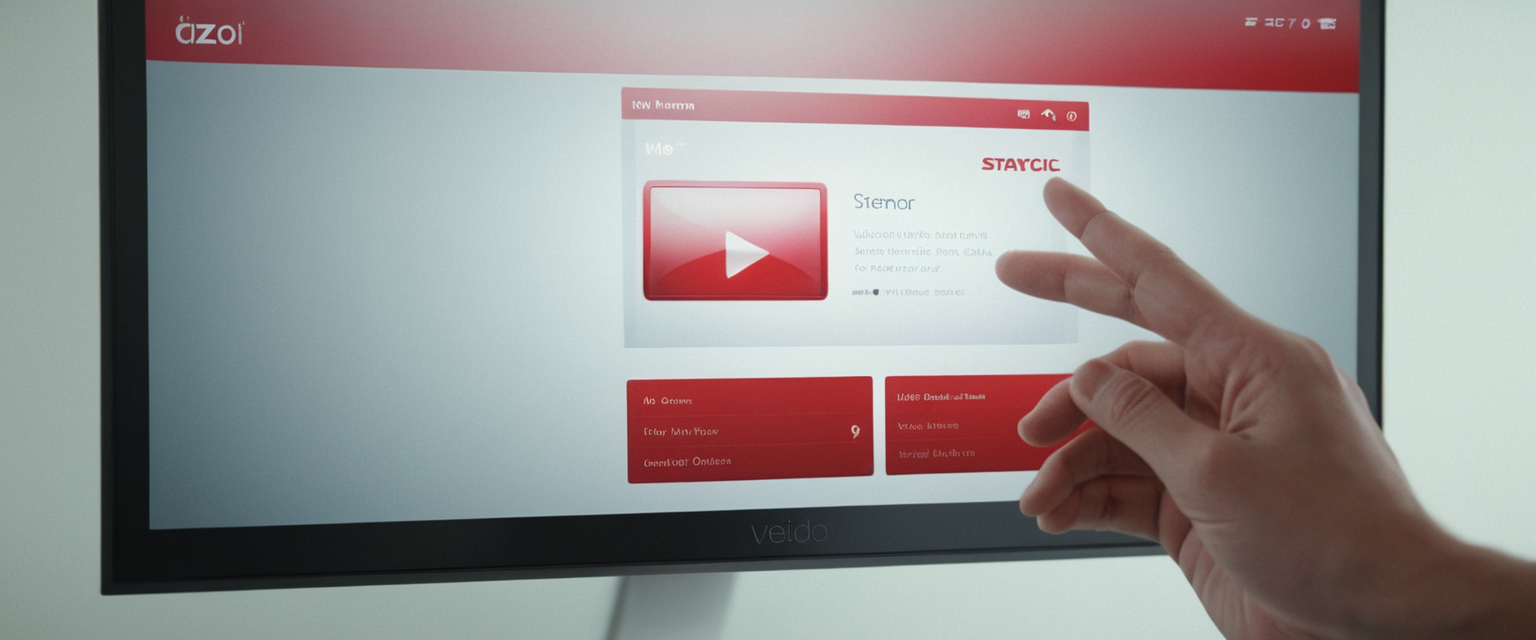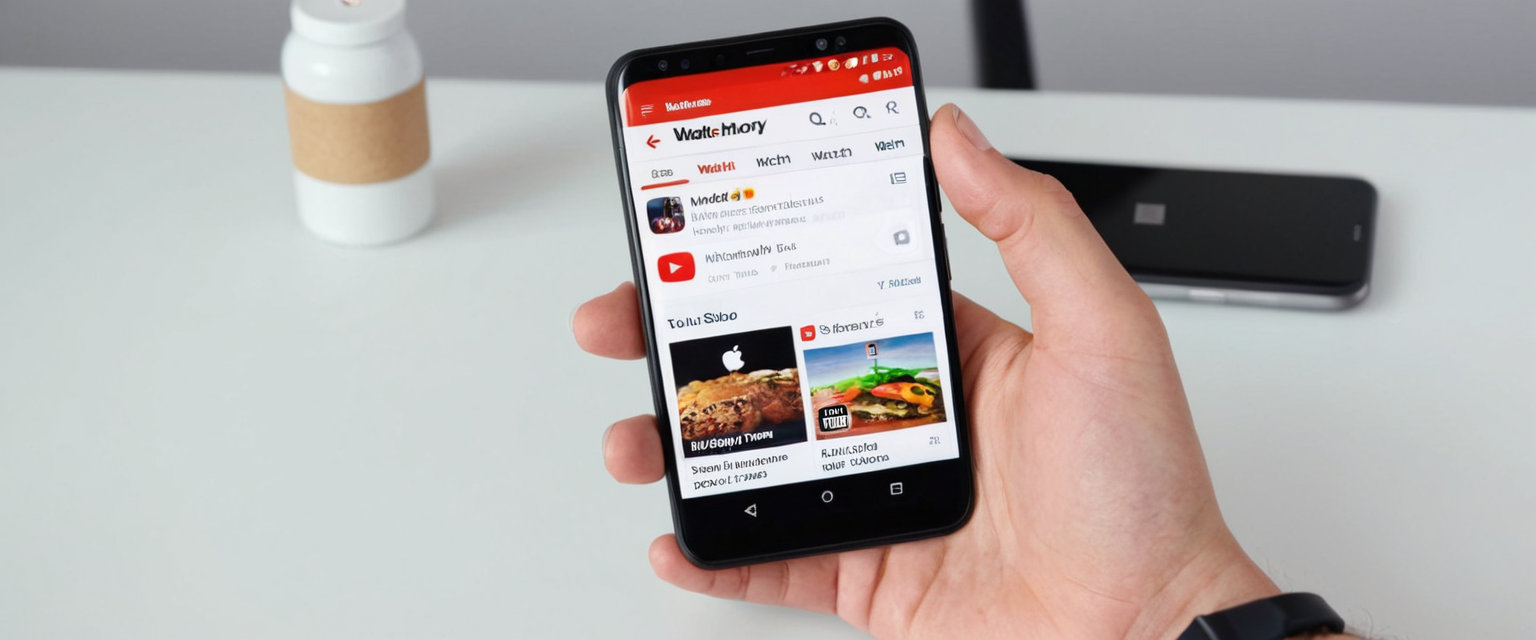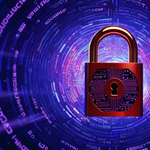
Clearing YouTube browsing history represents an essential digital privacy practice that allows users to manage their online presence, protect their personal information, and maintain control over how their viewing behavior influences algorithmic recommendations. YouTube, as a subsidiary of Google, maintains extensive records of user activity including search queries, watched videos, and various interactions, creating a comprehensive profile of viewing habits that extends across connected Google services. Understanding the multiple methods available to delete this accumulated history, whether through complete removal, selective deletion, or automatic purging mechanisms, empowers users to take deliberate control over their digital footprint while navigating the complex relationship between privacy preservation and personalized content discovery. This comprehensive guide examines the technical procedures, practical implications, privacy considerations, and strategic approaches to clearing YouTube browsing history across all major devices and platforms.
Understanding YouTube Browsing History and Its Components
The Nature and Scope of YouTube History Records
YouTube maintains several distinct categories of browsing history that extend beyond simple search queries and video watches. When users interact with the YouTube platform, the system documents not only which videos they watch but also which searches they perform, which videos they like or dislike, which comments they leave, which channels they subscribe to, and various other forms of engagement. This multilayered approach to data collection means that a user’s complete YouTube history represents far more than a simple list of viewed content, instead comprising an intricate record of preferences, interests, and behavioral patterns that YouTube and Google employ for multiple purposes.
Search history captures all queries users enter into YouTube’s search functionality, allowing the platform to identify trending topics users are interested in and further refine recommendations based on explicit search behavior. Beyond these primary categories, YouTube also records interaction history, which encompasses likes and dislikes applied to videos, comments posted on content, and subscriptions to channels. This comprehensive data collection infrastructure means that YouTube possesses an extraordinarily detailed understanding of individual user preferences, viewing patterns, and content interests that accumulates over months or years of platform usage.
Why Users Seek to Clear YouTube History
Users pursue clearing YouTube browsing history for a diverse range of motivations that reflect broader concerns about privacy, digital autonomy, and algorithmic influence. Privacy protection represents perhaps the most fundamental motivation, as users increasingly recognize that YouTube and its parent company Google maintain permanent records of their browsing activity that could potentially be accessed by other users sharing the same device, by household members, or in some cases by unauthorized third parties. Shared devices present particularly acute privacy challenges, as anyone with access to a computer or mobile device can potentially review the complete browsing history of users who have accessed YouTube from that device, potentially revealing sensitive information about viewing preferences or interests that users prefer to keep confidential.
Beyond device-sharing scenarios, users often seek to clear their YouTube history to reset their algorithmic recommendations and escape what content researchers describe as “filter bubbles” or algorithmic rabbit holes that can distort viewing suggestions toward progressively more extreme or niche content. Individuals report that after months or years of accumulated viewing history, YouTube’s recommendation engine becomes increasingly predictable and potentially problematic, suggesting videos that no longer reflect their current interests or preferences but instead perpetually reference their historical behavior. This problem grows more acute for users with extensive watch histories spanning many years, as their early viewing behavior—which may no longer reflect their actual interests—continues to exert disproportionate influence over current recommendations. Clearing history entirely provides users with a mechanism to reset this algorithmic trajectory and establish a fresh starting point where recommendations align with their actual current preferences.
Desktop and Computer Methods for Clearing YouTube History
Accessing and Clearing History Through the YouTube Website
The most straightforward method for clearing YouTube browsing history operates through the YouTube website itself, accessible to users who prefer browser-based management rather than mobile app interactions. Users begin this process by navigating to YouTube.com and signing into their account, after which they can access the history menu through the interface located on the left side of the page. By clicking the menu icon (typically displayed as three horizontal lines) in the top left corner of the YouTube interface, users reveal a navigation menu that includes a “History” option prominently displayed among other account-related features.
Once users select the History option from the navigation menu, YouTube presents them with their complete watch history displayed in reverse chronological order, showing the most recently viewed content at the top of the list. Within this history view, users encounter multiple options for managing their accumulated viewing records. To remove individual videos from the watch history, users can hover their cursor over specific entries in the list, which causes an X icon to appear at the right side of each video entry. Clicking this X button removes that specific video from the user’s watch history while leaving all other viewed content intact, a process that allows for selective curation of the history record.
For users seeking to remove their entire watch history rather than individual entries, YouTube provides a “Clear all watch history” button positioned on the right side of the history page, conveniently located beneath the search field. Clicking this button triggers a confirmation dialog that warns users that this action will permanently delete all video watching and browsing history, after which users must confirm their intention to proceed by clicking a “Clear watch history” button in the confirmation window. This two-step confirmation process ensures that users cannot accidentally clear their entire watch history through a momentary misclick, providing an important safeguard against unintended data deletion.
Accessing Search History Through the YouTube Interface
Separate from watch history, YouTube maintains a distinct search history that records all queries users have entered into the YouTube search function. Users access their search history by navigating to the same History menu but selecting the “Search History” option from the submenu that appears in the right panel of the history page. This displays a chronological list of all searches the user has performed, again arranged with most recent searches appearing at the top of the list.
Similar to watch history management, users can remove individual search queries by clicking the X icon that appears beside each search entry, or they can clear their entire search history by clicking the “Clear All Search History” button positioned on the right side of the page. YouTube again provides a confirmation dialog to prevent accidental deletion, requiring users to confirm their intention to remove all search history entries before the deletion proceeds. It bears noting that deleting search history prevents future YouTube suggestions from being influenced by those particular searches, and it also removes those searches from appearing as suggestions in the search box when users begin typing subsequent queries.
Utilizing the My Activity Dashboard for Comprehensive History Management
While the YouTube website’s native history interface provides sufficient functionality for basic history management, YouTube also offers more advanced administrative controls through Google’s “My Activity” dashboard, accessible by navigating to myactivity.google.com. This comprehensive activity management interface extends far beyond YouTube history alone, instead displaying all activity associated with the user’s Google Account across multiple Google services and platforms. For users specifically focused on YouTube history management, the My Activity dashboard provides enhanced filtering and deletion capabilities that exceed those available through the standard YouTube interface.
Upon accessing My Activity, users can filter their activity display to show only YouTube-related items by clicking “Filter by date & product,” which opens advanced filtering options allowing users to select YouTube as their specific focus area. After applying this YouTube-specific filter, the dashboard displays only YouTube-related activity including watch history, search history, and other YouTube interactions. From this filtered view, users can select “Delete results” to remove all filtered YouTube activity at once, or they can individually select specific activity items for deletion if they prefer selective removal rather than complete purging.
The My Activity dashboard also provides calendar-based filtering that allows users to delete history from specific time periods rather than all-or-nothing deletion. Users can select specific dates or date ranges, and YouTube will then limit deletion to only activity occurring within that specified timeframe. This granular control proves particularly useful for users who wish to remove recent history—perhaps from a time period when someone else had access to their account—without losing their entire historical record.
Automatic History Deletion Configuration
Understanding that many users prefer not to manage history deletion manually, YouTube has implemented an automatic deletion feature that removes browsing history after specified intervals without requiring user intervention. Users can access this auto-delete functionality through the My Activity dashboard by selecting the “Auto-delete” option, which presents three preset intervals for automatic history removal. YouTube offers users the option to automatically delete their search history after either three months, eighteen months, or thirty-six months have elapsed since the activity occurred. Alternatively, users who prefer to retain their complete history indefinitely can select “Don’t auto-delete activity,” which disables automatic deletion entirely.
The automatic deletion feature represents a sophisticated privacy solution that allows users to maintain current, useful browsing history for algorithmic personalization purposes—which many users genuinely appreciate—while ensuring that very old history does not accumulate indefinitely and potentially compromise privacy over extended periods. This approach balances the recommendation benefits that accrue from having sufficient browsing history to power YouTube’s algorithms against the privacy risks that emerge when historical data accumulates without bound over years of platform usage.
Mobile Platform Methods: iOS and Android Applications
Clearing YouTube History on iOS Devices
Users accessing YouTube through the official YouTube application on iPhone, iPad, or iPod Touch devices follow a distinctly different procedure than desktop users, as the mobile interface presents different navigation pathways and menu structures. To begin clearing YouTube history on iOS devices, users must first open the YouTube application and authenticate to their account if not already signed in. Once authenticated, users tap on their profile picture icon, typically located in the top right corner of the YouTube app interface, which opens a profile menu containing various account-related options.
From the profile menu, iOS users should select “Settings” to access the YouTube settings interface specific to their account. Within the Settings menu, users scroll down to locate the “Clear Search History” option, which manages search history specifically rather than watch history. Tapping “Clear Search History” initiates the deletion process, at which point YouTube presents a confirmation dialog asking users to confirm their intention to remove their entire search history. Users complete the process by tapping a “Clear History” button in the confirmation dialog, after which YouTube permanently removes all recorded searches from their account.
For clearing watch history specifically on iOS, the process differs slightly from search history management. Instead of accessing Settings from the profile menu, iOS users should look for a “History” option that typically appears directly under their profile information when they initially access their profile page. Tapping this history entry reveals viewing history with a “View all” option, which displays the complete watch history in a format that allows for management and deletion. Users then tap the three-dot menu icon in the top right corner of the watch history page, which reveals options including “Clear all watch history,” which users select to initiate complete watch history deletion. Similar to search history, YouTube requires confirmation before permanently deleting watch history, ensuring that accidental deletions cannot occur through momentary interface misinteractions.

Clearing YouTube History on Android Devices
Android users follow procedures comparable to iOS users but with minor interface differences reflecting Android’s distinct design conventions. To clear YouTube history on Android, users begin by opening the YouTube application and verifying they are signed into their account. Users then tap their profile photo icon, typically located in the bottom right corner of the YouTube app, which opens the profile menu. From this profile menu, Android users select “Settings” to access their account settings.
Within the Settings interface, Android users should locate and tap the “Manage all history” option, which provides comprehensive access to all types of YouTube activity history. This opens a dedicated history management interface that displays various tabs including search history, watch history, and interaction history such as likes and dislikes. To clear search history specifically, users navigate to the appropriate section and tap the “Delete” button, at which point YouTube displays options to delete today’s searches, a custom date range, or all-time search history. Users select “Delete all time” to remove all accumulated searches, then confirm the deletion when prompted.
For watch history deletion on Android, users access the same “Manage all history” interface and locate the watch history section. Similar to search history, users tap beside individual videos to delete them separately, or they can tap the “DELETE” button to access bulk deletion options. Selecting “Delete all time” removes all videos from the user’s watch history, with YouTube requiring confirmation before permanently executing the deletion command.
Advanced History Management and Alternative Approaches
Pausing History Rather Than Deleting
Rather than permanently deleting browsing history, YouTube offers users the alternative of pausing history recording, which prevents new activity from being saved while leaving existing historical records intact. This approach appeals to users who wish to stop YouTube from tracking their current activity without sacrificing the benefit of having historical data available to power recommendations based on past viewing behavior. To pause search history on desktop, users visit the My Activity page and select “Saving your search history,” then unselect the checkbox labeled “Include your searches on YouTube,” which halts recording of new searches.
Similarly, users can pause watch history through the same My Activity interface by accessing the Controls tab and unchecking “Include the YouTube videos you watch,” which prevents future video views from being added to the user’s watch history. On mobile devices, both iOS and Android users access the history controls through their respective Settings or History menus, where they can disable history recording by unchecking the appropriate options. The pause functionality proves particularly valuable for users who wish to maintain their existing recommendation algorithm benefits while protecting their privacy regarding imminent new activity, such as when preparing to search for personal information they prefer not to have recorded.
Interactive History: Likes, Dislikes, and Comments
Beyond the core watch and search history categories, YouTube maintains what it terms “interaction history,” which records all likes and dislikes users have applied to videos, as well as comments they have posted on video content. Users often overlook these interaction records when managing privacy, focusing exclusively on search and watch history while leaving comprehensive records of their preferences recorded through likes and dislikes. To access and manage interaction history, users should navigate to “Manage all history” through either the YouTube website or mobile app, then locate the “Interactions” tab or section.
Within the interactions section, users can select “Video likes and dislikes” to view and manage all videos they have rated, with options to delete individual ratings or all ratings from specified time periods. Similarly, users can manage “Comments” to review and delete comments they have posted across YouTube videos and channels. Many users report surprise upon discovering the extent of information stored in interaction history, particularly regarding videos they have liked that they may no longer wish to have publicly associated with their accounts, making thorough review of interaction history an important privacy practice.
YouTube Incognito Mode for Preventing History Recording
For users seeking to browse YouTube without creating any history records, YouTube offers an “Incognito mode” feature available on both the mobile YouTube app and through web browsers. When using YouTube Incognito mode, the platform does not save the user’s search history, watch history, or other activity records in their account, instead maintaining complete privacy regarding browsing activity during the incognito session. Users access Incognito mode in the YouTube mobile app by navigating to their profile and selecting “Turn on Incognito,” which shifts the app to a private browsing mode visually indicated by a dark interface theme and an “Incognito” label displayed at the bottom of the screen.
While browsing in Incognito mode, any searches performed or videos watched will not appear in the user’s history when they subsequently view their activity in normal mode. However, users should understand that Incognito mode provides privacy exclusively within the YouTube app or browser, not across the internet generally—their Internet Service Provider, network administrators, and the websites they visit can still observe their activity even while using Incognito mode. Additionally, any files downloaded or bookmarks created during Incognito sessions will persist after the session ends, as Incognito mode specifically prevents history recording rather than all data collection.
Understanding the Impact of History Clearing on Recommendations and User Experience
How Deleted History Affects YouTube Recommendations
Deleting YouTube browsing history produces immediate and substantial effects on the recommendation algorithms that determine which content YouTube displays to users on their homepage and in sidebar suggestions. YouTube explicitly states that deleted search entries no longer influence its recommendations, meaning that videos suggested based on deleted searches will no longer appear in personalized recommendation sections. Similarly, when users delete their watch history, YouTube ceases basing recommendations on that previously viewed content, instead restricting recommendation algorithms to rely solely on the user’s remaining recent activity and current subscriptions.
For users who have accumulated extensive watch history spanning many years, clearing this historical record produces a dramatic reset that some describe as transformative and others experience as disorienting. A documented example from a user who deleted over a decade of accumulated YouTube watch history reveals that recommendations immediately shifted from displaying increasingly narrow or extreme content categories to instead showing primarily content from channels the user actively subscribes to, along with recent videos that align with their current viewing patterns. This transition can feel jarring for users accustomed to YouTube’s sophisticated personalization, as the recommendation engine temporarily operates with severely limited data about their preferences, leading to more generic suggestions that lack the specificity that characterizes YouTube’s typical behavior.
However, the clearing of history also offers advantages beyond privacy protection, particularly for users whose historical viewing behavior no longer reflects their actual interests. Users report that in the weeks following complete history deletion, as they watch new content that genuinely interests them, YouTube’s recommendation algorithms rapidly learn their updated preferences and adapt recommendations accordingly, often resulting in a markedly improved recommendation feed compared to their experience before history deletion. This “fresh start” mechanism appeals particularly to long-term YouTube users who feel their recommendations have become stale, predictable, or influenced by outdated preferences from earlier periods of their YouTube usage.
Distinguishing Between Deleted History and Paused History
The distinction between deleting history and merely pausing it carries important implications for the user experience and recommendation quality. When users pause their watch history without deleting existing records, YouTube continues to base recommendations on all previously accumulated viewing history but stops adding new activity to that historical record. This means recommendations remain informed by the user’s entire previous watching pattern, but the algorithm receives no new information about the user’s current interests, leading to stagnant recommendations that progressively diverge from actual current preferences.
In contrast, when users delete their watch history entirely and simultaneously pause history recording, YouTube has no historical data whatsoever to inform recommendations, resulting in the most generic possible suggestions until new history begins accumulating. Users should understand that pausing history without also deleting existing history typically produces inferior results compared to complete history deletion if their goal is to refresh recommendations, because the old historical data continues exerting influence on algorithms despite being ignored for future accumulation.
Regional, Regulatory, and Privacy Considerations
Impact of Digital Markets Act on European Users
European Union users face a unique regulatory environment regarding YouTube history management, stemming from implementation of the Digital Markets Act (DMA), which took effect on March 6, 2024. Under DMA provisions, Google now offers EU users the choice to maintain certain Google services in linked or unlinked status, affecting how data—including YouTube viewing history—is shared across Google’s service ecosystem. When Google services remain linked, YouTube viewing activity can be shared with Google Search, Chrome, Google Maps, and other connected Google services to inform personalization across the entire ecosystem. EU users can access these linking preferences by navigating to their Google Account settings and selecting “Manage linked services” under the Data and Privacy section.
By managing these linked service preferences, EU users gain granular control over whether their YouTube viewing history influences recommendations and personalization across other Google services, providing an additional layer of privacy management beyond simple history deletion. Users outside the EU lack these specific DMA-granted options, though they can still delete history and manage privacy through the methods described previously.

Google Account Activity and Cross-Service Data Sharing
Beyond YouTube-specific history management, users should recognize that YouTube history forms part of their broader Google Account activity, which extends across multiple Google services including Google Search, Google Maps, Gmail, and Chrome browsing history. When users are signed into their Google Account while using Chrome or other Google services, activity across these services can be synchronized and aggregated, creating a unified profile of user activity across multiple platforms. Users concerned about privacy implications of this aggregated activity should visit myactivity.google.com to review and manage their complete cross-service Google Account activity rather than focusing exclusively on YouTube history.
The My Activity dashboard allows users to delete activity across all Google services simultaneously, or to filter deletion requests by specific services and time periods. Additionally, users can disable activity recording across Google services by navigating to Google Account settings, selecting “Data & Privacy,” and disabling activity recording for specific Google services or all services entirely. However, users should understand that disabling activity recording prevents Google from providing personalized experiences across its services, potentially resulting in less useful search results, recommendations, and other personalization features.
Troubleshooting Common Issues and Advanced Scenarios
Recovering from Accidental History Deletion
While YouTube’s two-step confirmation process prevents most accidental history deletions, users sometimes discover that they have deleted history they intended to preserve, either through confirmation of unintended deletion or through later regret regarding the decision to delete comprehensively. Unfortunately, YouTube does not provide a standard recovery mechanism for deleted history, as the deletion process permanently removes the data from user-accessible interfaces and YouTube archives typically do not preserve detailed historical records accessible to individual users for recovery purposes.
However, users may retain limited recovery options in specific circumstances. If a user deleted history very recently—typically within hours—the deletion may not yet have fully propagated across Google’s servers, and in rare cases Google’s support team might retrieve portions of recent deleted data if the user contacts them and provides compelling justification. Additionally, users who maintain regular backups of their Google Account data through Google Takeout (a data export service) might be able to recover historical information from their most recent backup prior to the deletion. For users who have not previously exported their account data, Google Takeout cannot help recover deleted content.
Managing History Across Multiple Devices and Synchronization
When users access YouTube from multiple devices while signed into the same Google Account—such as a smartphone, tablet, and computer—their browsing history automatically synchronizes across all these devices by default, with YouTube recording activity from any device into the shared account history. This synchronization feature provides convenient continuity but can create privacy complications when users share devices with household members or when they use different devices for different purposes and want to maintain privacy separation.
Users seeking to prevent YouTube history synchronization across devices can disable syncing by accessing their YouTube settings and disabling the synchronization options in history controls. Additionally, by using separate Google Accounts on different devices, users can maintain distinct browsing histories for different devices or usage contexts, though this requires managing multiple accounts rather than relying on single-account synchronization controls.
Implications of History Deletion for YouTube Features and Functionality
Deleting one’s entire YouTube watch history produces effects beyond just changing recommendations, as various YouTube features depend upon having sufficient historical context to function properly. When users delete all watch history and subsequently disable watch history recording, YouTube’s “Continue Watching” feature—which displays partially watched videos that users have started but not completed—will not function, as the platform has no historical context regarding user viewing activities. Similarly, personalized recommendations on the YouTube homepage depend upon having browsing history data, and with no history available, such recommendations disappear entirely, with the homepage instead displaying a message encouraging users to begin searching for content to populate the feed.
Users should understand these functional implications before choosing to completely delete all history, and should consider whether the benefits of history deletion justify the loss of these convenience features. Some users prefer a more targeted approach, using pausing rather than deletion for ongoing privacy protection while preserving some historical context to maintain YouTube functionality.
Best Practices and Recommendations for Effective History Management
Developing a Personalized History Management Strategy
Rather than adopting a one-size-fits-all approach to history management, users should develop personalized strategies aligned with their specific privacy concerns, device usage patterns, and preferences regarding recommendation algorithms. For users who primarily access YouTube from personal devices without sharing and who value YouTube’s personalization features, the auto-delete function set to delete history after three to six months represents an effective compromise that prevents history accumulation while maintaining recent history for algorithmic personalization.
Conversely, users with significant privacy concerns or those who frequently share devices with others should consider either clearing history immediately after each YouTube session or enabling Incognito mode for any browsing activity they prefer not to record. Users who find their recommendations increasingly unhelpful or distorted should consider complete history deletion followed by careful curation of new activity—including immediately removing unwanted videos from their watch history as they watch them—to rebuild their recommendation profile with greater intentionality than they initially exercised.
Regular Audit and Proactive History Management
Rather than waiting until history reaches overwhelming levels before taking management action, users should develop habits of regular history auditing and proactive management. Setting monthly or quarterly calendar reminders to review and delete any searches or videos users prefer not to have recorded helps prevent the accumulation of large historical records and keeps privacy management current rather than playing catch-up. Additionally, users should review their interaction history—particularly likes and dislikes—regularly, as these often remain unnoticed but still contribute to comprehensive user profiles.
Users should also make conscious decisions when watching potentially sensitive content, either using Incognito mode or immediately removing such content from their history afterward, rather than allowing sensitive viewing records to accumulate indefinitely in their accounts. This proactive approach prevents situations where a user discovers substantial sensitive viewing history after months or years, making privacy management an ongoing practice rather than a crisis response.
Device-Specific Considerations and Multi-Device Privacy
Households with multiple users accessing YouTube from shared devices should establish clear conventions regarding history management and device-sharing practices. For shared devices, complete clearing of history after each session by each user represents the most straightforward privacy approach, though less disruptive alternatives include each household member maintaining their own Google Account and signing out between uses, or establishing device-specific accounts used by all household members while maintaining privacy-sensitive accounts only on personal devices. Families with young children should particularly prioritize clearing YouTube history, as children’s viewing patterns have traditionally appeared prominently in household recommendations until history management clarifies that these views should not influence adult recommendations.
A Clearer YouTube Awaits
Clearing YouTube browsing history represents a fundamental component of comprehensive digital privacy management that extends far beyond simple data deletion to encompass broader questions about algorithmic influence, data accumulation, and personal autonomy in digital environments. The extensive technical options available—including complete history deletion, selective removal, pausing, automatic deletion, and incognito browsing—empower users to implement privacy protection strategies aligned with their specific circumstances, concerns, and preferences regarding the balance between privacy and personalization functionality.
Users’ decisions regarding YouTube history management should reflect thoughtful consideration of multiple factors including their device-sharing practices, privacy concerns regarding specific viewing activities, satisfaction with current recommendations, and broader commitment to limiting data accumulation by technology corporations. The documentary evidence of users’ transformative experiences after deleting extensive watching history—particularly regarding refreshed recommendations and restored sense of algorithmic control—suggests that comprehensive history deletion can meaningfully improve user experience for those whose recommendations have become stagnant or unhelpful.
Moving forward, users should recognize that YouTube history management represents not a one-time action but an ongoing practice integrated into their regular digital hygiene routines, involving periodic audits, proactive deletion of sensitive content, and deliberate choices about which activities to allow recording into permanent corporate databases. The availability of automated deletion mechanisms and incognito browsing options facilitates this ongoing management without requiring excessive manual intervention, while the transparency YouTube provides regarding history contents and management tools enables informed decision-making about personal data governance. By understanding the full scope of YouTube’s history recording, the available management mechanisms, and the implications of various deletion strategies, users can exercise genuine control over how their viewing behavior is recorded, stored, and leveraged to shape their digital experiences on one of the world’s most influential content platforms.
Protect Your Digital Life with Activate Security
Get 14 powerful security tools in one comprehensive suite. VPN, antivirus, password manager, dark web monitoring, and more.
Get Protected Now





